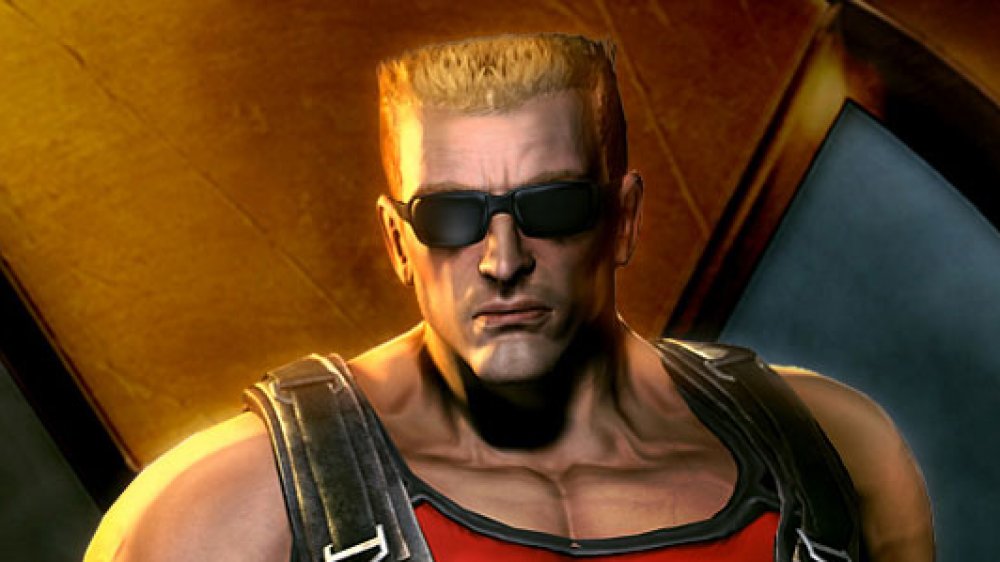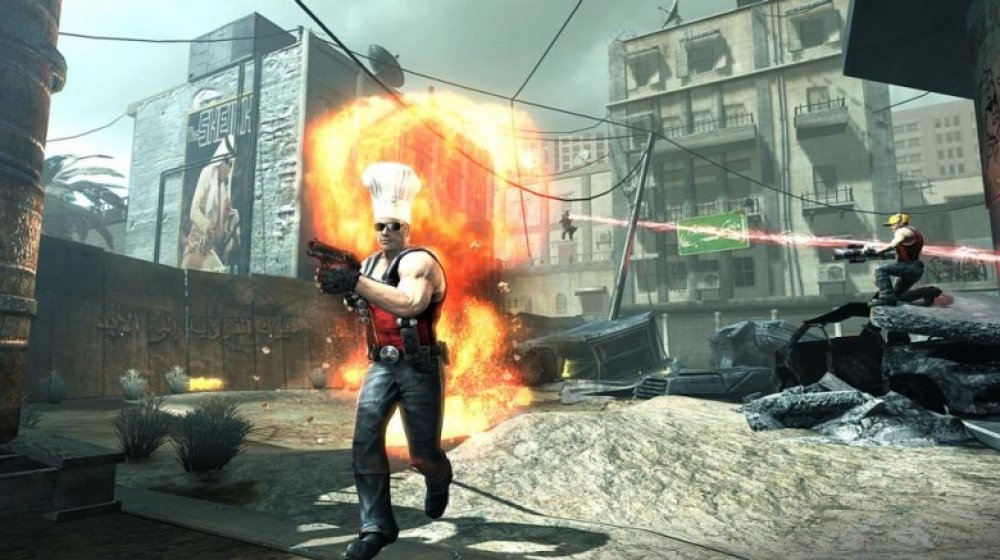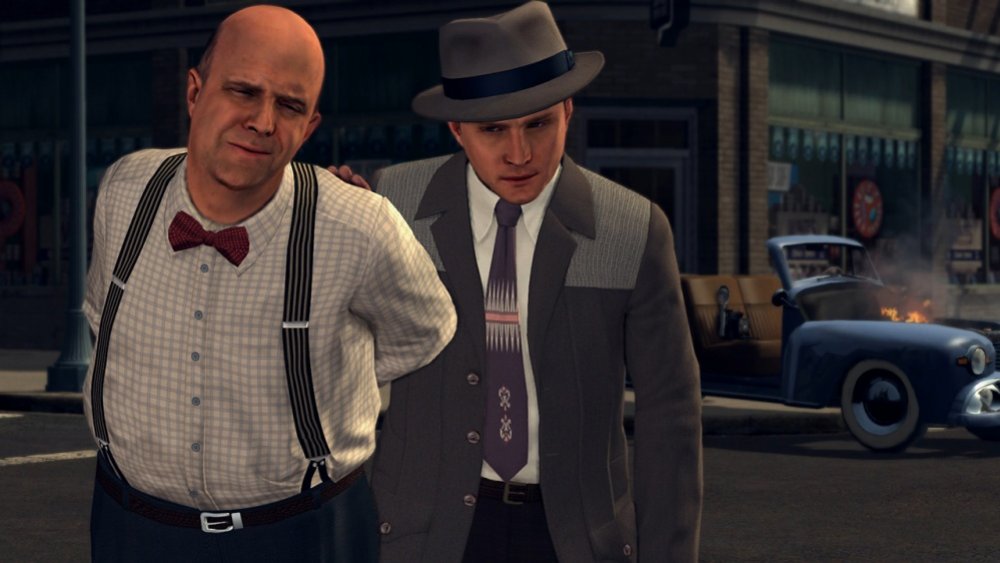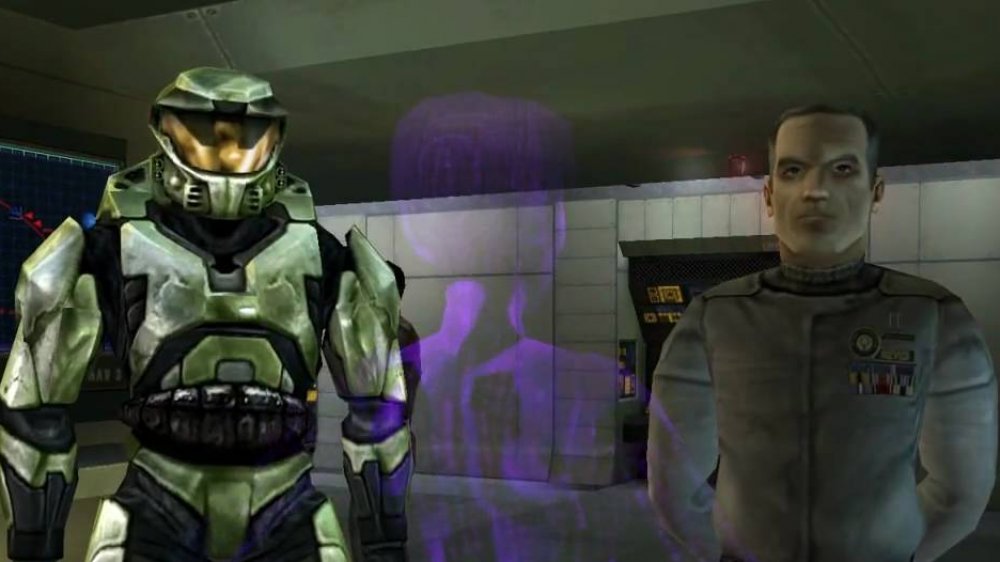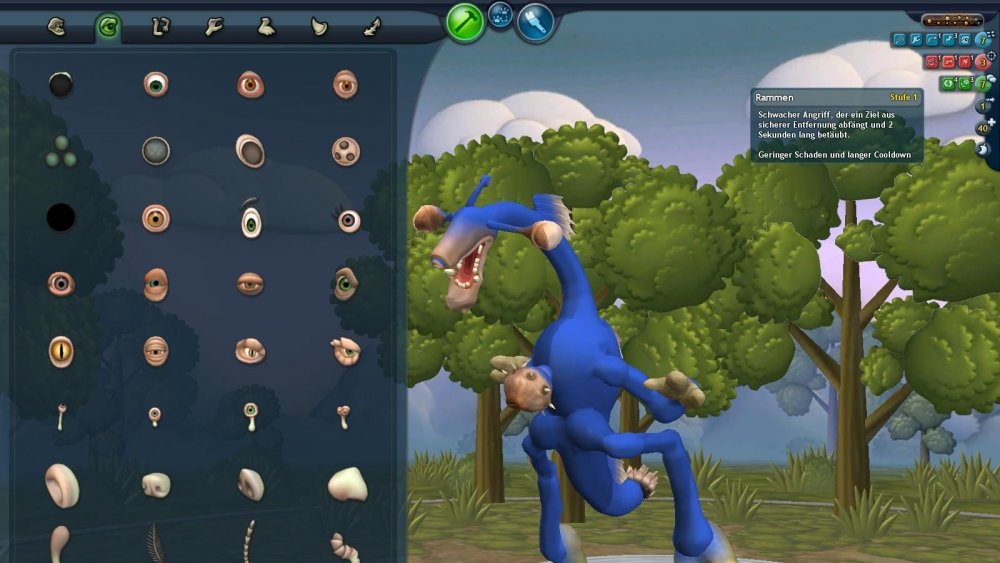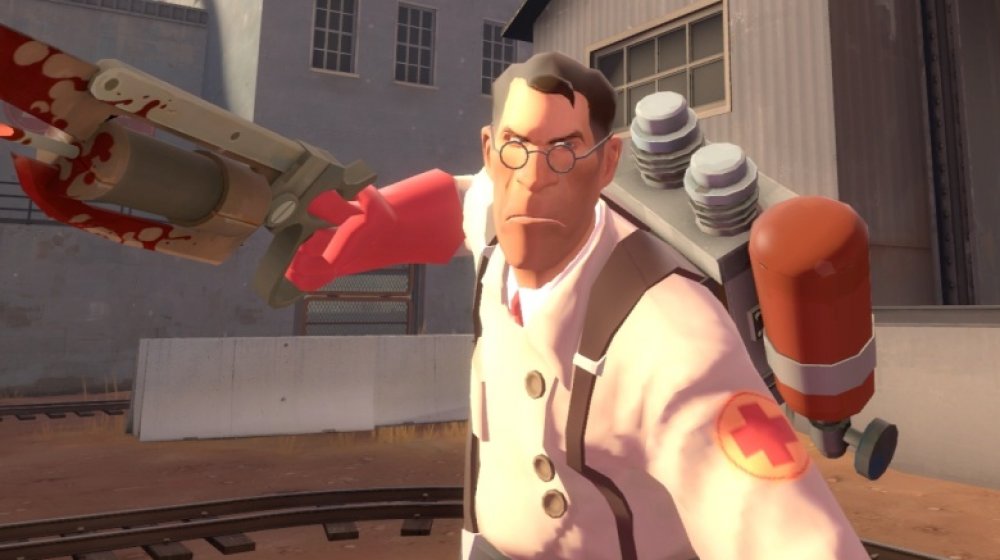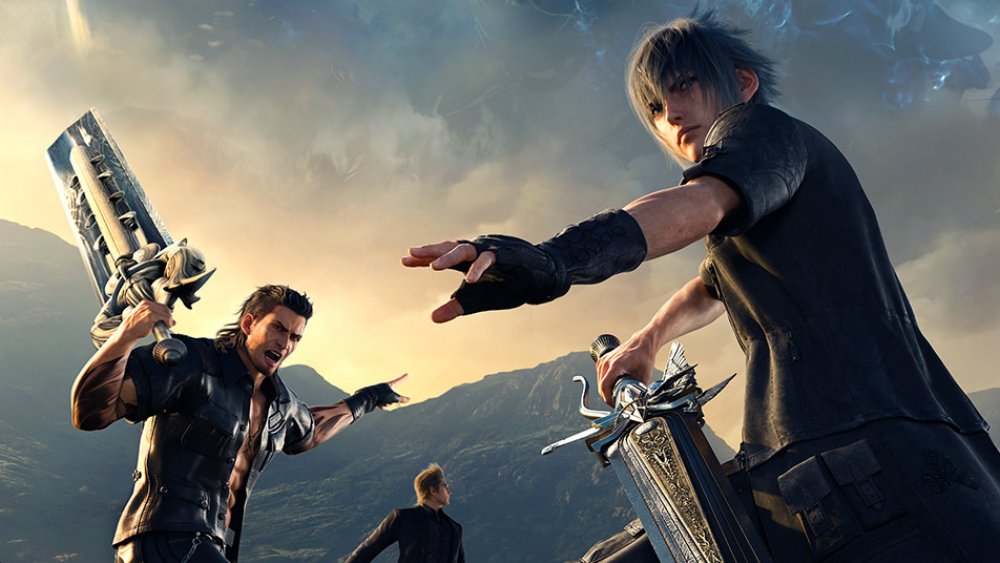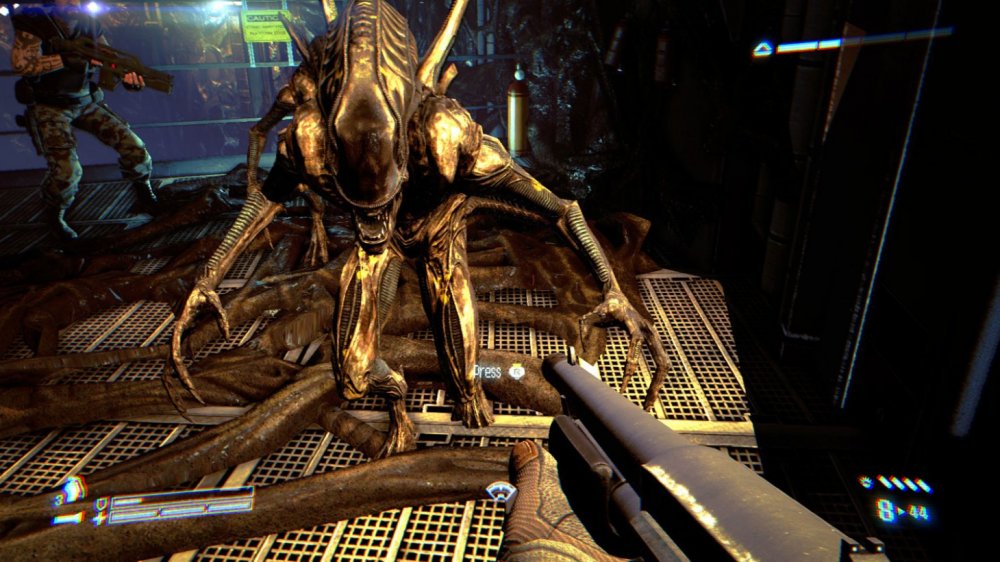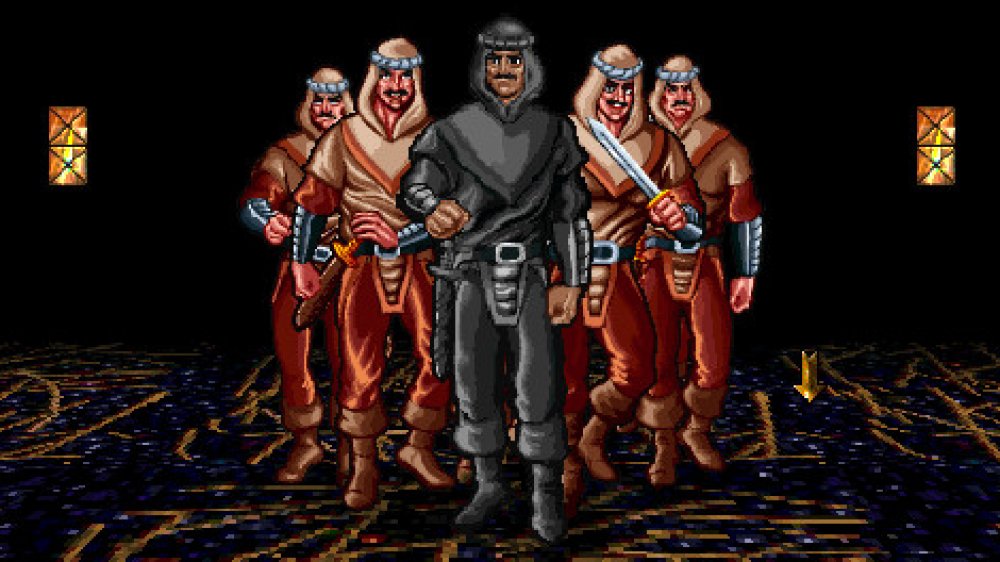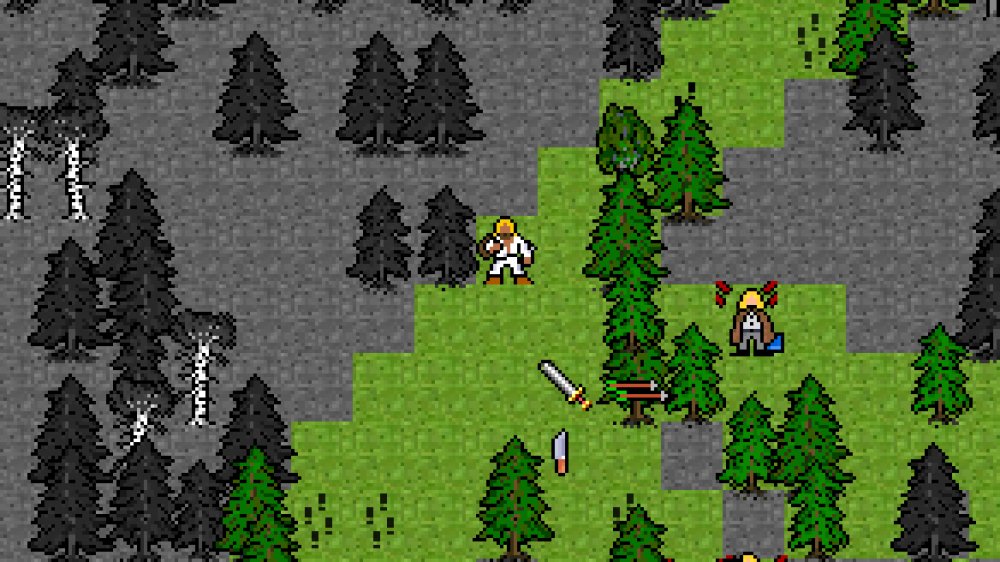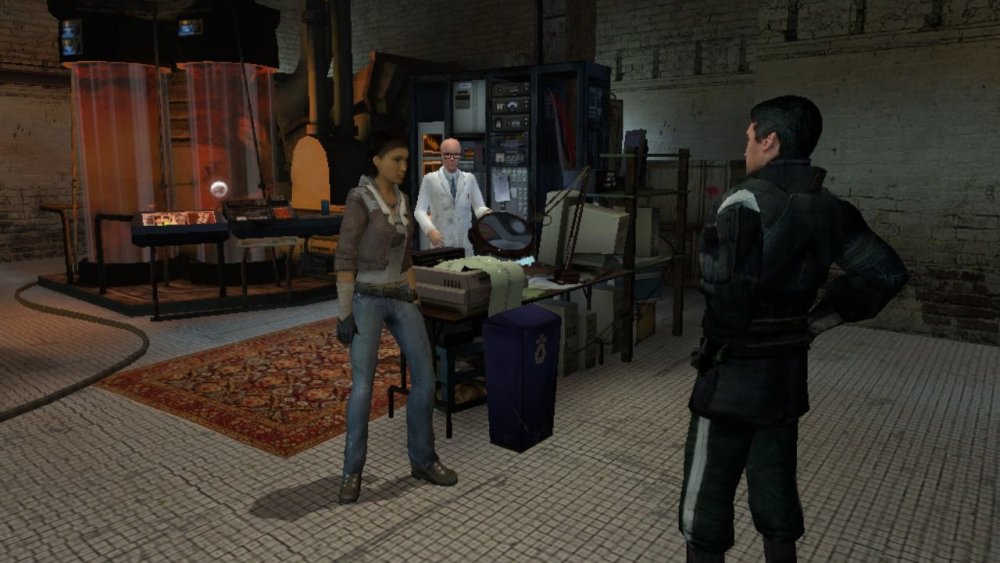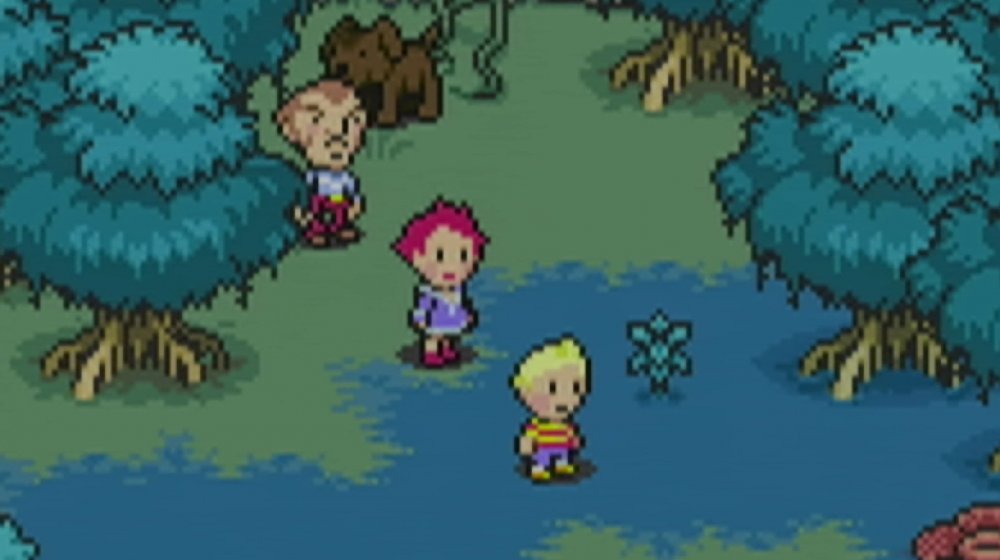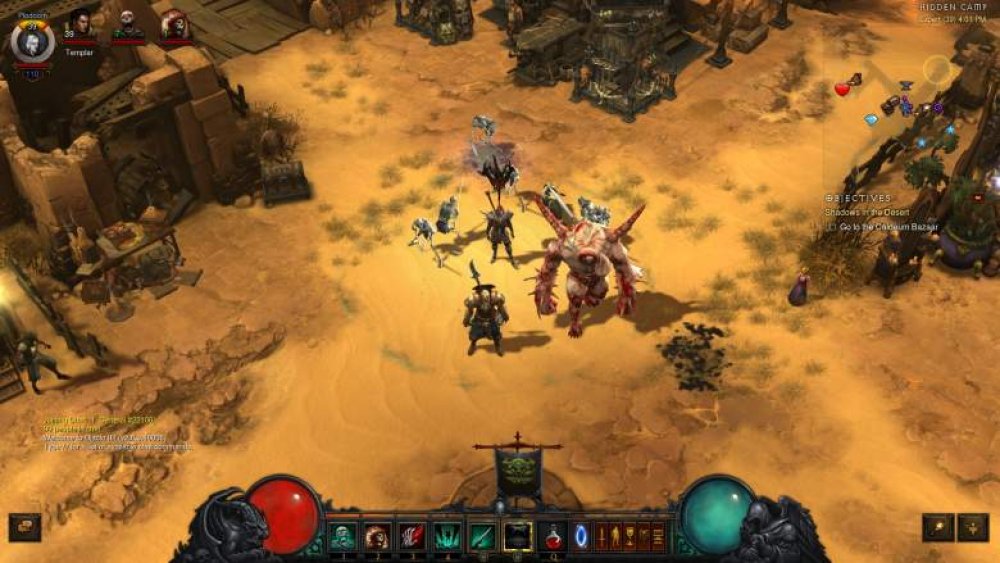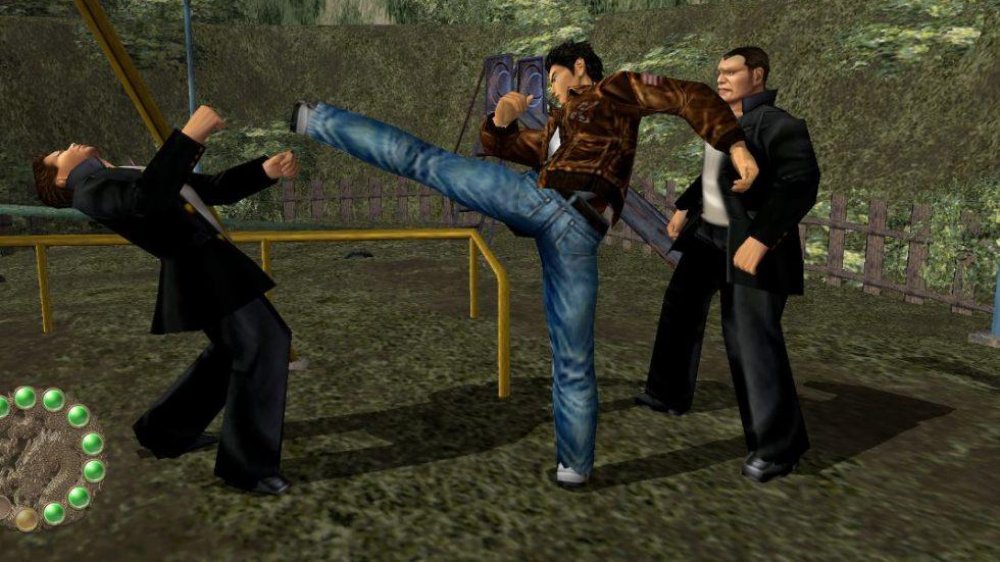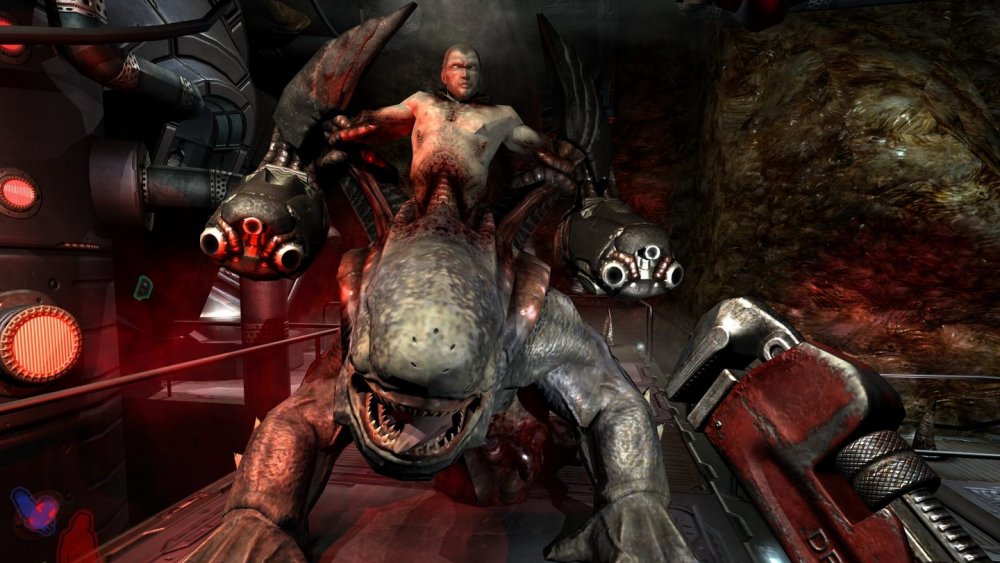Games Released Years After The Original Release Date
Time and time again, gamers are thrust into a test of patience as highly anticipated games fail to meet their deadlines. It's always a disappointment to find out a game you've been dying to play for over a year is suddenly rescheduled. And when such a postponement occurs, the possibility of cancelation looms.
Indeed, many games are lost in "development hell." But not all projects that experience this bleak stage of development suffer an untimely fate. Some video games can spend 10, 15, or even 20 years in production and still see the light of day. In some cases, the results can justify the long delays, but is it always worth the wait? Though Shigeru Miyamoto once said "A delayed game is eventually good. A bad game is bad forever," this may not always be the case.
Here are some games that were released years after the original release date.
Duke Nukem Forever
This one can't possibly come as a surprise. Beyond the obvious joke of Duke Nukem Forever being stuck in production forever, this game is perhaps the most infamous, well-known example of a game that escaped development hell. And as you may already know, it will "forever" be remembered for how disappointing it was.
Following the insanely popular Duke Nukem 3D, Duke Nukem Forever certainly had its work cut out for it. Factoring in the 15-year development period, you've got a perfect recipe for a game that can't possibly live up to expectations. 3D Realms, the original developers, had trouble figuring out how to do a proper follow-up to Duke Nukem 3D justice, and as a result, missed its intended launch in 1998 and continued to miss deadlines. After the company folded, it was believed Duke was finished. But Take-Two Interactive resurrected the project and, with Gearbox Software at the helm, Duke Nukem Forever finally made it to store shelves in 2011.
The reception was not good. The game was plagued with offensive and aggressively immature humor that was often in poor taste. And while Duke Nukem 3D had excellent gameplay and fast-paced action, Duke Nukem Forever was a drag, with gameplay taking a backseat to the adult content.
L.A. Noire
L.A. Noire got a lot of attention when it first came out. A compelling and immersive story-driven game, L.A. Noire featured impressive graphics with innovative detail in facial expressions that served an integral role in how you played. It also allowed gamers to live out a compellingly stylistic period piece in the role of a detective. What's not to love? Perhaps waiting seven years.
There's a good reason for that too. The story behind L.A. Noire's development is perhaps one of the most troubled in history, as the developers at Team Bondi were reportedly overworked, underpaid, and emotionally abused by Brendan McNamara, the company's founder. Under his leadership, Team Bondi had a high turnover rate, slowing down production even further and causing even more delays. Rockstar pressed the company to wrap up development, which only made things worse as he put pressure on his poor staff to speed things up.
In the end, McNamara's treatment of his employees would be his downfall, and L.A. Noire would be the only game ever released by Team Bondi. Sure, the game was successful, but was it worth the suffering endured by those who made it?
Halo: Combat Evolved
What Doom did for the first-person shooter genre, Halo: Combat Evolved did for console FPS games. It brought about a new era for playing FPS outside of PCs with a much more comfortable set of mechanics for controllers. But Halo was slated to have a far different fate — one that would delay its release several years.
Originally referred to as "Armor," Halo began as a small team effort in 1997 by a company known for producing successful games for Apple computers. You heard that right. Bungie was originally on Team Macintosh. The game itself was much different as well — a third-person shooter in an open-world setting. Halo was announced at MacWorld 1999 by none other than Steve Jobs himself as part of a major push for gaming on Apple computers.
Apple was having trouble keeping up with 3D accelerator technology at the time, which forced a number of developers, including Bungie, to look elsewhere, delaying Halo's release. Even though the game was supposed to premiere on both Apple and PC, Microsoft purchased Bungie with the intention of introducing Halo on the company's first gaming console, and the rest is history. Mac eventually got a port but missed the glory of launching Halo.
Spore
After creating games where you simulate entire cities, a planet, and even human life, where do you go next? Why, evolution, of course. Spore is a game by Sim franchise creator Will Wright that allows players to cultivate their own life forms from the beginning stages to complex organisms.
The seed that eventually became Spore was first planted in 2002. Wright took on the ambitious task of bringing his complex concept to life and formed a small team to get the wheels in motion. By 2005, his team had grown significantly. The game garnered a lot of attention at that year's E3, but wouldn't be available to the public for another three years. The developers faced significant challenges in realizing Wright's vision. Chief among those difficulties was designing comfortable interfacing tools to make this new kind of game accessible for gamers.
Spore was expected to launch in 2006, but at the time EA, the game's publisher, was focused on delivering quality gaming experiences, giving Wright and his team the slack needed to perfect this impressive new title. The company put a lot of faith in Spore's success, and in 2008, the game finally landed in the hands of consumers.
Team Fortress 2
Valve sure does have a reputation for broken promises. And perhaps no other game better illustrates the company's tendency to put its fans through long waiting periods than Team Fortress 2. Well — no released game, anyway.
Team Fortress began as a Quake mod, and its sequel was intended to come out in 1998 as an expansion to the highly popular Half-Life. It did not, and the following year, gamers saw a gameplay demo that would mark the beginning of a long delay that lasted almost a decade until Team Fortress 2 finally made it onto the market.
In its first incarnation, Team Fortress 2 was a far more realistic team shooter. Kotaku's Luke Plunkett states that, according to Valve, the project underwent a game engine transfer in 2000. From there, development appeared to stop entirely until 2006 when Team Fortress 2 emerged as something completely different. Undergoing a significant facelift, the long delay finally made sense and the results were worth the wait.
At long last, gamers got to play the highly-stylized team shooter in 2007 when Valve put out The Orange Box. The following year, Team Fortress 2 was released as a separate game.
Final Fantasy 15
So much can happen over a ten-year period. Final Fantasy 15 had seen so many ups, downs, and delays during its decade-long development, it's nearly a miracle it came out at all.
What is now Final Fantasy 15 began as an entry into the Fabula Nova Crystallis series under the name Final Fantasy Versus 13. The world saw a trailer for this new title all the way back at E3 2006, and the reception was positive. Tidbits of information regarding the game continued to surface into the following year along with an extended trailer. 2010 marked the first demonstration of real gameplay footage, but two years later, rumors began circulating regarding the game's inevitable cancelation. It would no longer truly be Final Fantasy Versus 13, but would instead re-emerge as Final Fantasy 15 in 2013, keeping the game's story intact while revamping for a PS4 launch.
After three more years — and some tweaks and overhauls — Final Fantasy 15 made it out of development hell, releasing in 2016. But once again the game was consumed by those flames as its DLC continued the development hell tradition. Another three years would pass until Final Fantasy 15's last DLC installment came out.
Aliens: Colonial Marines
Sega may have jumped the gun when announcing its acquisition of rights to the Alien franchise in 2006. The project that would become Aliens: Colonial Marines? That didn't end up seeing the light of day until seven years later. Almost immediately after the company's announcement, Sega made it publicly known that it was partnering with Gearbox to develop a first-person shooting game based on the popular sci-fi franchise. This too may have been premature, considering the game was in an early stage of development, leaving Sega without anything to showcase.
According to Kotaku's Jason Schreier, Gearbox had a massive, unforeseen hit on its hands with Borderlands in 2009. As such, its team pawned off developmental duties to another company in favor of kickstarting Borderlands 2 and thus the trouble began. TimeGate, the new team, had a sequel of its own to wrap up, causing further delays to Aliens: Colonial Marines. When the project resumed in 2010, the developers at TimeGate were in disbelief over the lack of progress on Gearbox's part.
Even by 2011, the game's story was up in the air. Working under the supervision of Sega and Gearbox, there was a constant clash of ideas. When it came out in 2013, the game was critically panned.
Grimoire: Heralds of the Winged Exemplar
How long is too long for a game to undergo development? While Duke Nukem Forever may be the best-known example of a delayed release, it does not hold the record for the longest development time. Grimoire: Heralds of the Winged Exemplar was in production for two decades, testing the limits of how long a game can remain in the kitchen before it's too old to serve.
Originally slated for a 1997 release, Cleve Blakemore, the game's sole developer, failed to deliver. But he certainly didn't give up! In that time, Blakemore pushed forward with fundraising efforts, attracting the kind of attention that tends to bring near-mythic levels of intrigue. When the game was at last made available on Steam in 2017, it was not as good as you would expect from a game 20 years in the making.
Graphically, Grimoire is very dated. But beyond the claims of nostalgia aesthetic, it lacked the proper supporting material (i.e. a guidebook or manual) upon release that was common with games of its kind and era. Its interface is not the most pleasant, and after launching it was riddled with bugs. All that aside, though, Grimoire appears to be a competent game.
UnReal World
If you thought 20 years was a long time for a game to enter the market, wait till you learn about UnReal World. No, this is not related to the Unreal series. In fact, it predates it. What first began in 1990 would not be available to purchase until its Steam debut in 2016.
This RPG, which originated as shareware, was made by two individuals: Sami Maaranen and Erkka Lehmus. Since 1992 when it was first released as a free game, UnReal World has seen a number of improvements and updates, resulting in something very different from what it once was. Possessing older graphics akin to that of Grimoire, UnReal World puts you in a more grounded mythical setting than most RPGs, challenging you to survive against nature, wildlife, and hostile tribes. So what exactly kept this game in development for so long?
Popularity and passion. Fans kept wanting more, and the developers got used to constantly improving this one game. As Maaranen's imagination continued to run wild, the game became an outlet for his innovative ideas. If it were up to him, UnReal World may have remained free, but according to Wired, his fans urged him to sell it through Steam.
Half-Life 2
The Half-Life series is infamous for long and sometimes indefinite delays. Even the first game had a turbulent development cycle. But Half-Life 2 is a true testament to perfectionism. From Gabe Newell pulling the plug on the game's presentation at E3 2002 to missing a high-profile launch the following year, Valve made a habit of stomping on gamers' hopes in favor of delivering a true masterpiece.
The team eagerly began work on a sequel in 1999, merely half a year after the first Half-Life arrived at stores. Valve had an ambitious task ahead: creating a follow-up to its smash hit first-person shooter. And the developers behind Half-Life 2 were dedicated to outdoing their previous entry with something unprecedented and groundbreaking.
To accomplish this, Newell allotted his team as much time and money as needed to realize this vision. From there, the developers split into their own "cabals," or small, tight groups that would focus on dedicated sections of the game. The developers and writers worked in harmony, and everything came together marvelously. Only it took five years to perfect. But considering the result, it becomes clear Newell and his team made the right choice by taking their time.
Mother 3
Earthbound (Or Mother 2, as it's known in Japan) is a 1995 cult classic game for the Super Nintendo that has grown quite a strong and dedicated fan base. A sequel to this SNES classic had quite a wild ride before it finally arrived on the Game Boy Advance in 2006. You may be wondering — why'd the follow-up take so long?
Originally slated for the Super Nintendo even before Mother 2 made it to the states, Mother 3 was first publicly announced in 1996 as an N64DD title. Nintendo shared a demo at 1999's Space World, but the game was ultimately canceled the next year. In an interview with series creator Shigesato Itoi, Shigeru Miyamoto explained that Mother 3 didn't quite come together on the N64, and he was uncertain as to whether Nintendo could have made it work at all. But a new platform gave the lost sequel renewed hope.
Due to overwhelming demand and support from fans, Itoi took Mother 3 to the Game Boy Advance, and Japan finally got this highly desired sequel. Unfortunately, American audiences are still waiting for a localization, having to settle for fan patches in lieu of an official release.
Diablo 3
Released in 2012, Diablo 3 spent 11 years clawing its way out of development hell. Such is a symptom of Blizzard's more lenient approach to deadlines, insisting that a game is finished when it's finished. This sort of philosophy can certainly work, though it doesn't always mean the results are positive.
With the closure of Blizzard North in 2005, Diablo 3 was frequently rebuilt from scratch. The team spent a lot of time on playtesting to make sure what it was creating was good. This highly repetitive method significantly slowed the process and put Diablo 3 past its expected launch, but it helped the talent at Blizzard discover what worked and what didn't. The team continued to work diligently until the game was ready. Or so it thought.
Error 37 came to be an infamous blight on Diablo 3's launch that almost ruined everything Blizzard had worked to accomplish in those 11 years. As the game went live, so many anxious fans of the series logged on at once that servers could not handle the traffic. This was a deadly error, considering the game was made to be played exclusively online. Fortunately, Blizzard was able to address the issue, and Diablo 3 was running in two days.
Shenmue
Would you have ever guessed that Shenmue, a highly acclaimed RPG, has its humble origins in Virtua Fighter? It's true. In fact, the creator of the series was more known for arcade hits, not elaborate RPGs. Yu Suzuki wanted to go beyond the limits of short-term arcade gaming and create a more involved and expansive story-driven game. And a character from his Virtua Fighter series would help him make that transition.
Dating back to 1996, Suzuki began work on a Virtua Fighter RPG for the Sega Saturn that followed Akira as he ventured out to confront his father's murderer. Suzuki was determined to do his RPG right and thus involved film writers and directors to help him craft his narrative. His plans included open-world exploration, professional voice acting, and extensive cut scenes, which meant his project was fated to sit in production longer than your average game. He desired to produce an RPG without limits, both in its scope and its development.
In 1997, due to the Saturn's technical limitations and poor financial performance, the game was delayed to make its way over to the upcoming Dreamcast, later rebranding under the title Shenmue. Losing all connections to Virtua Fighter, Shenmue launched on the Dreamcast in 1999, and the results were quite marvelous.
Prey (2017)
The original Prey took a long time to complete, thanks to a troubled period of development. An announcement for the title first came in 1995, and Prey didn't arrive until 11 years later. But did you know that the more recent reboot spent just as much time in development hell?
The game that would become 2017's Prey was announced in 2006, right after its predecessor released. Beginning life as a sequel, development on Prey 2 stalled out for a few years. In 2009, the wheels began to turn once again, yielding a demo for E3 2011. Everything was steadily progressing for a 2012 launch, but production stopped yet again in 2011. Human Head Studios, the team behind Prey and Prey 2, was allegedly embroiled in a bit of a power struggle, leading to a strike which resulted in the game's rights going to Bethesda.
By 2014, Prey 2 was dead in the water — at least as a sequel. Arkane Studios took over the project, pivoting from a sequel to a reboot, and in 2016 the news was made official. Finally, in 2017, the game that carried its predecessor's development hell legacy was finally released. Judging by the way the first two went, who knows if you'll ever see another Prey title again.

